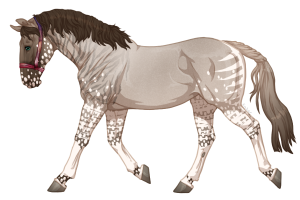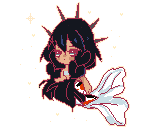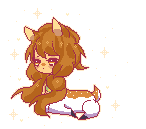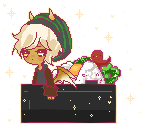The first horse to trot up into our costumed horse adopt isn't as simple as one would think... turns out, this horse isn't in costume at all! This poor thing is a severely neglected creature who needs a whole lot of TLC!
To take her home, and give her love, fill out the form below! Once she is adopted out, her pretty, healthy self will be posted! (with full information, including actual breed/color/etc, and a better mane/tail. ;3)
Describe the conditions you think she has (hint: she has at least 4!) and how to heal those issues. You don't need to get all of them to win, whoever retrieves the most and finishes it the best.
End Date: October 9th.
To take her home, and give her love, fill out the form below! Once she is adopted out, her pretty, healthy self will be posted! (with full information, including actual breed/color/etc, and a better mane/tail. ;3)
Describe the conditions you think she has (hint: she has at least 4!) and how to heal those issues. You don't need to get all of them to win, whoever retrieves the most and finishes it the best.
aftershock. wrote:Username: aftershock.
Show Name: Chase You Down
Barn Name: Her official barn name is Pennie, but most call her the "zombie" as a joke.
Gender: Mare
Breed: Stock Horse
Height: 15.0 hands
Age: 12 years old
Color: ????
Markings: ????
Genes: ????
Apparent Conditions: Mange, Mud Fever, Malnutrition, Rain rot, major dirt/mud stuck to her coat, apparent blindness caused by cataracts.
How to help/heal her:
Mange- Mange is a type of skin disease that can cause itching, hair loss, and infected skin. Depending on what case of mange, most are treated by spraying, sponging, or dipping Organophosphate insecticides onto the infected area for a related time up to 12-14 days, normally 3-4 times a single day. Oral administration of ivermectin or moxidectin can also be attempted, with several treatments two to four weeks apart.
Mud fever- Mud fever is a group of diseases that causes painful irritation and dermatitis. Removing the horse from the condition to a clean, safer one is ideal as well as keeping the sores dry and clean daily. Zinc, castor oil, lead acetate and various commercial anti-inflammatory ointments in the forms of creams and lotions can be applied to the wounded areas for healing, bandaging the area is also a good idea. Treatment is to be repeated several times and the horse may not be healed until after a few weeks.
Malnutrition- Malnutrition is caused from the lack of food and water given to an animal, causing it to lose weight dramatically. Giving the horse a steady, balanced diet to ease into is the best thing for it. The horse will need copious amounts of food to gain it's weight and health back but keeping it in portions is best so that the digestive system has time to get used to the new schedule of eating. Horses affected by this will obviously need to eat more than the healthy horse with good weight.
Rain rot- Rain rot is a bacterial infection that will cause lesions and scabs along the horse's body. Most cases of rain rot can and will heal on their own, depending on the severity of the area. But it is best to treat even minor cases because the lesions can spread. simply removing the scabs (by bathing the horse) with antimicrobial shampoos and currying will take care of the problem, but if it is a very servers case calling a veterinarian to help with antibiotic injections is ideal for treatment.
Dirt- This one is easy! Combing out muddy mats in a horses coat and mane, and tail, and brushing regularly keeps a horse clean and healthy. Picking dirt and rocks out of their hooves and bathing them regularly all take care of the dirt that can cake and get stuck to a horse's coat.
Cataracts- if the problem is serious enough, cataracts can be removed surgically from an adult horse's eye, or eyes, as long as they have no other inflammatory or major issues with said eye. It will restore the vision as best as possible to the animal.
End Date: October 9th.































